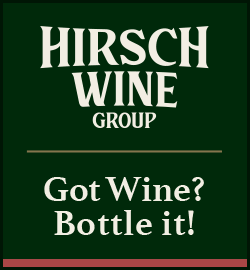Image: Hayden Higgins.
COVID-19 restrictions have shattered the on-premise market for wine sales in the United States – Australia’s second largest export market by volume – resulting in lower total wine sales and significant revenue losses for some US wineries, according to a recent report by wine analysts at Rabobank.
Over March and April 2020 combined, there was an estimated US$47 billion, year-on-year reduction in total sales in US foodservice and drinking establishment channels as restrictions set in.
And with sales in full-service restaurants and bars not likely to return to 2019 levels until after 2021, Rabobank’s Q2 report, titled ‘COVID -19 and the US premium wine market Part 1’, highlights that wine producers selling into the US market would need to find new ways of engaging consumers in the future.
Rabobank senior wine analyst Hayden Higgins said total sales for US food service and drinking establishments for the first four months of 2020 were down an estimated US$68 billion, or 22 per cent.
“For wine sales, the percentage drop in the on-premise channel will be even higher, given these are more heavily reliant on full-service bars and restaurants, which performed even more poorly than limited-service restaurants,” he said.
Higgins said the US on-premise wine sales channel was comparatively small in volume terms, but important for access and margins.
“The on-premise channel typically accounts for less than 20% of annual wine sales in the United States, but it’s extremely important, particularly for small, premium wine brands which sell a greater proportion of their product into restaurants and bars,” he said.
Australian wine export figures reflected the premiumisation trend for wine in the US, and Australia’s efforts to capture more of this market.
While exports of Australian wine to the US for the year ended March 2020 were down 11% by volume, they were only two per cent lower by FOB value in AUD terms – suggesting product was directed at the premium market.
And despite the drop in total Australian wine export volumes to the US, Higgins said Wine Australia reported that the average price per litre rose to the highest levels since August 2009.
The Rabobank report said, barring a vaccine, the on-premise US wine sale channel would likely take years to recover.
“Between government enforcement of social distancing measures, consumer reluctance to return on premise due to fears of contagion, and reduced business and tourism travel, many bars and restaurants may be forced to permanently shut their doors unless a vaccine is made available sooner than most experts expect,” Higgins said.
“Given these, and other, challenges, it’s anticipated the US food service industry will likely not return to 2019 levels until after 2021, and that the recovery would be led by limited-service restaurants and take-out/delivery, where there is less consumption of premium wines.”
He said larger wholesalers who had a greater proportion of sales in the off-premise, as well as more financial muscle, should be better placed to withstand these challenges.
Higgins said the US alcoholic beverage market’s three-tier system was particularly challenging for smaller wine brands.
“The US alcoholic beverage market operates under a three-tier system made up of manufacturers in the first tier, a second tier comprised of importers, distributors or wholesalers who purchase the product from the manufacturer, and a third tier of retailers,” he said.
“Under this system, producers are unable to sell directly to US consumers. It’s therefore essential brands work closely with their US distributors – who are in regular dialogue with retailers – so they can better understand changes in the way US consumers are purchasing wine.”
Implications for Australian winemakers
With the on-premise channel in the US struggling, Higgins said Australian wine brands would need to consider how their distributors were currently working with retailers, and also planning for future channel changes in the way consumers purchase wines.
For Australian producers vying for share in the US market, he said, digital strategies will become increasingly critical for sales success.
“While the on-premise sales are currently facing monumental challenges, the growth in e-commerce has been well-documented, and will provide an important opportunity for wineries seeking alternative growth strategies – both in the US, Australia and other markets,” Higgins said.
“We’re already seeing this process well underway in Australia, as wineries try to offset the decline in tasting room sales with e-commerce.
“Beverage companies are finding new, innovative ways to connect with consumers wherever they are, in a digital environment and to help drive sales across channels.”
For Australian wine exporters, Higgins said, considering how e-commerce at the retail level and connecting to the US consumer would evolve – and how distribution partners were preparing for this – should be a core component of discussions, and were relevant conversations for other markets beyond the US.
“These questions include how they think about e-commerce within the organisation, whether they should buy or build an e-commerce team and where it should sit within the organisation.”
Higgins said Tsingtao, the Chinese beer company, provided one recent example of a beverages company that has used e-commerce to increase sales.
“Tsingtao used lockdown measures in China as an opportunity to further create a network of ‘community distributors’ – essentially social media influencers working on commission – that has been extremely successful by a number of measures,” he said.
Are you a Daily Wine News subscriber? If not, click here to join our mailing list. It’s free!





















